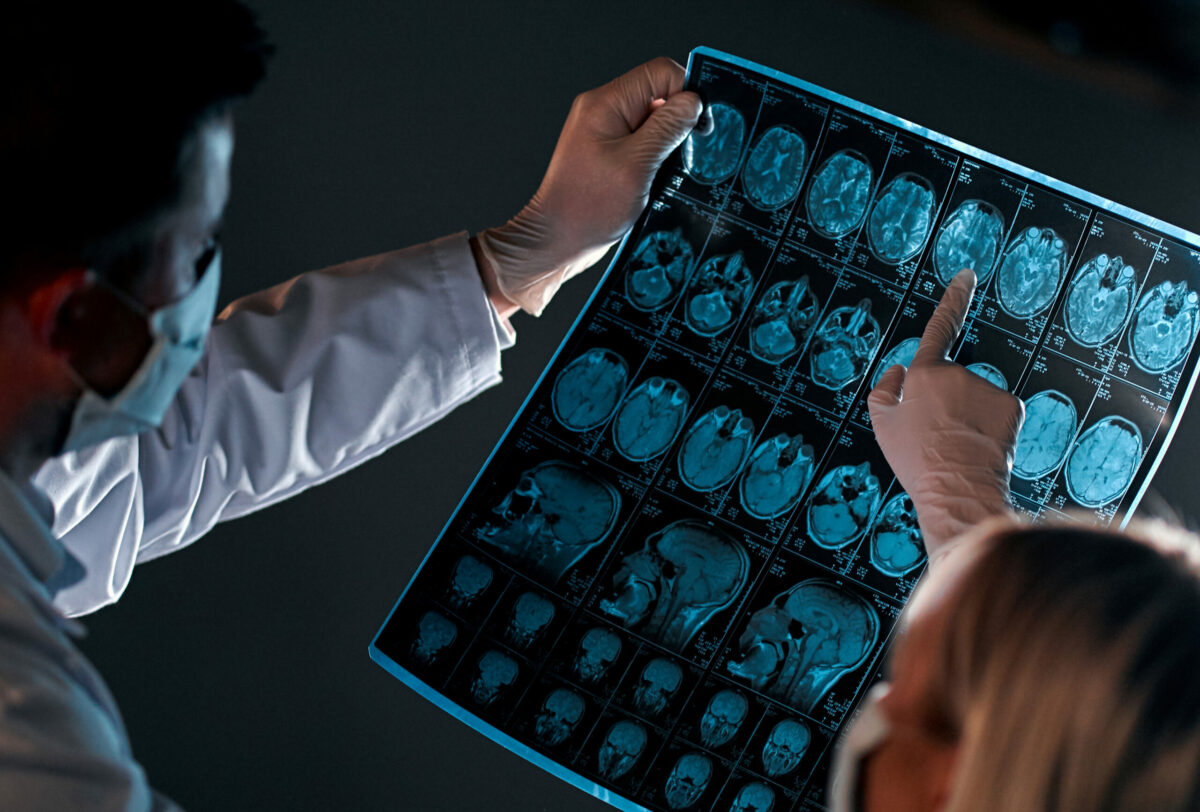A neurological condition in which people experience recurrent seizures is called epilepsy. A sudden abnormal electrical activity in the brain is called seizures. This condition is usually diagnosed by a doctor when a person has at least two seizures without identifiable cause.
According to the World Health Organization (WHO), approximately 50 million people suffer from this condition worldwide and 3.5 million in the United States, according to the Centers for Disease Control and Prevention (CDC).
Epilepsy can occur in anyone but most commonly in young children and older adults. As per studies, males are more likely to develop this condition than females. It happens because of certain risk factors such as head trauma and alcohol use.
Experts categorized this condition into two types. For example:
- Generalized seizures (this type impacts the all brain)
- Focal seizures (this type is also known as partial seizures and affects one part of the brain only)
If a person has mild seizures, they can be difficult to recognize because the duration in mild cases is only a few seconds. In severe cases, seizures provoke uncontrollable muscle movement. The duration of severe seizures ranges between a few seconds to minutes and may lead to confusion and loss of consciousness. In addition, those who experience severe seizures often do not remember about it.
At this time, epilepsy cannot be cured but early diagnosis and treatment can reduce the symptoms and improve your quality of life.
Symptoms
The primary epilepsy symptom is seizures. However, people may experience other symptoms according to epilepsy type.
Focal Seizures
Focal-aware seizure type does not cause loss of consciousness. Check below some focal seizures symptoms:
- Dizziness
- Twitching and tingling of the limbs
- Sense alterations of smell, sight, hearing, touch, or taste
However, focal unaware seizures (also known as complex partial seizures) can cause loss of consciousness and awareness. Check below some symptoms:
- Repetitive movements
- Unresponsiveness
- Staring blankly
Generalized Seizures
This epilepsy type is classified into certain subtypes. For example:
- Absence seizures – Another name for this subtype is “petit mal seizures”. These usually provoke short-term loss of awareness, repetitive movements (blinking or smacking), and others.
- Tonic seizures – In such cases, an individual can experience sudden stiffness in the muscles of the arms, trunk, or leg.
- Atonic seizures – This seizure type can cause a loss of muscle control, which leads to sudden falls.
- Clonic seizures – These provoke jerky muscle movements of the neck, face, and arms.
- Myoclonic seizures – People who experience this subtype will notice quick twitching of the arms and legs.
- Tonic-clonic seizures – Also known as “grand mal seizures”. They usually provoke stiffening of the body, shaking, loss of bladder or bowel control, tongue biting, loss of consciousness, and others.
Commonly, people do not remember they have had a seizure and they may feel ill for several hours.
Causes
Approximately 50% of people with this condition have not identified the exact cause. Check below some factors that could contribute to epilepsy development:
- Brain or head injuries
- Brain scarring (post-traumatic epilepsy)
- Serious health conditions or very high fever
- Stroke
- Lack of oxygen to the brain
- Brain tumors or cysts
- Alzheimer’s disease which is a type of dementia
- Brain malformations, prenatal injuries, lack of oxygen at birth, and others
- Infectious health conditions (including meningitis and HIV and AIDS)
- Developmental or genetic disorders
- Neurological diseases
Epileptic Seizure Triggers
There are some people that can determine what triggers their seizures. Check below the most common of them:
- Fever
- Lack of sleep
- Stress
- Health conditions
- Bright or flashing lights
- Prescription and recreational drugs
- Caffeine
- Alcohol and alcohol withdrawal
- Overeating
- Some food ingredients
- Head injuries
- Extremely low sugar levels in the blood
However, it is not easy to determine the triggers because a single incident does not mean it is a trigger. To identify your seizure triggers it is advised to keep a seizure journal. You should not in this journal the following after each seizure. Examples include:
- What time and day it is
- Unusual smells, sights, sounds, and stressors
- What was happening around you and what activity you were involved in
- The fatigue level and how well you slept last night
This journal can also help to identify what medicine does not work for you.
Complications
Seizures can directly or indirectly negatively affect other parts of the body. Check below some potential complications:
- Difficulty learning
- An injury from a fall during a seizure
- Injury while driving an automobile or operating a machinery
- Depression
- Brain damage due to prolonged and uncontrolled seizures
- Choking saliva or food
- Medicine adverse reactions
In addition, about 1 in every 1000 people with epilepsy experience sudden unexpected death in epilepsy (SUDEP). This is an epilepsy-related death that is not provoked by injury, drowning, or other causes. Some experts think that breathing pauses, airway obstruction, and irregular heartbeats can contribute to SUDEP.
However, SUDEP commonly occurs in people who do not treat this condition. That’s why it is advised to visit doctors and follow carefully their recommendations.
Diagnosis
Immediately seek medical attention if you suspect you have had a seizure. Physicians will perform a neurological examination (to test your motor and mental abilities) and will ask some questions about symptoms and medical history.
Moreover, to diagnose epilepsy, other health conditions that provoke seizures should be excluded. Therefore, your doctor may order you to do a complete blood count (CBC) and chemistry of the blood. These blood tests may be done to check for infectious diseases, liver and kidney function, and blood glucose levels.
In addition, an electroencephalogram (EEG) is usually used to determine whether you have epilepsy or not. This is a non-invasive and painless procedure that checks electrical activity in your brain. In case your doctor is not sure you have epilepsy, you may need to do other tests. For example:
- CT scan
- MRI
- Positron emission tomography (PET)
- Singe-photon emission computerized tomography
Treatment
The treatment usually is different among people because it depends on the severity of the symptoms, overall health, age, and response to treatment. Check below some epilepsy treatment options:
- Anti-epileptic (anticonvulsants, antiseizure) drugs – These medications help to decrease the number of seizures and sometimes get rid of them all. If you are taking the drugs exactly as prescribed by your doctor, they are quite effective.
- Vagus nerve stimulator – It is a device that is placed surgically under the skin on your chest and electrically stimulates the nerves.
- The ketogenic diet – More than 50% of children who do not respond to medicines have benefited from a ketogenic diet, which involves eating foods with high fat and low carbohydrates, according to the Epilepsy Foundation.
- Brain surgery – In some cases, the area of the brain that provokes seizures is removed or altered.
The primary treatment for epilepsy is medicines. They are used to reduce the severity and frequency of the seizures. Check below some epilepsy medicines that doctors usually prescribe:
- Levetiracetam
- Lamotrigine
- Topiramate
- Valproic acid
- Carbamazepine
- Ethosuximide
Using epilepsy medications for long periods may lead to some adverse reactions. For example skin rash, dizziness, fatigue, memory problems, poor coordination, and others. Inflammation of the liver and other organs and depression are some severe negative effects but are quite rare.
Frequently Asked Questions
Is epilepsy a curable neurological condition?
No, it is not possible to cure this condition but with early diagnosis and proper treatment, you can control seizures and improve your quality of life. Discuss with your healthcare professional for more details.
What should people with this neurological condition avoid?
If you have epilepsy it is advised to avoid the following trigger factors. For example:
- Not taking medicines as prescribed by your healthcare professional
- Stress
- Not having a good sleep
- Periods
- Alcohol
- Recreational drugs
- Flickering and flashing lights
- Health conditions that provoke high body temperature
- Extreme tiredness
Can I drive with epilepsy?
Commonly, people can return to driving after seizure seizure-free 12-month period. In case you have additional questions, ask your healthcare professional.




